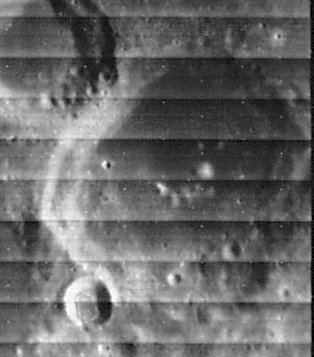Colombo
Contents
Colombo
|
Lat: 15.28°S, Long: 46.11°E, Diam: 79.02 km, Depth: 2.53 km, Rükl: 59 |
Images
LPOD Photo Gallery Lunar Orbiter Images Apollo Images
Maps
(LAC zone 79C3) LAC map Geologic map
Description
Elger
(IAU Directions) COLOMBO.--A fine ring-plain, about 50 miles in diameter, situated in the highlands separating the Mare Foecunditatis and the Mare Nectaris. The wall, rising at one place to a height of 8,000 feet above the floor, is very complicated and irregular, being traversed within by many terraces, and almost everywhere by cross-valleys. Its shape is greatly distorted by the large ring-plain a, which abuts on its N.W. flank. It loses its individuality altogether on the S., its place being occupied by two large depressions, and lofty mountains trending towards the S.W. In the centre there are several distinct bright elevations.
Wikipedia
Additional Information
- IAU page: Colombo
- Depth data from Kurt Fisher database
- Westfall, 2000: 2.53 km
- Viscardy, 1985: 2.4 km
- Cherrington, 1969: 2.22 km
- Central peak height
- Sekiguchi, 1972: 0.8 km - fatastronomer
- Besides the central peak, it contains an oblong hill 0.7 km tall, a minute peak (0.2 km) on a whitish region, and a tiny peak on the bottom of the west wall (0.3 km tall), white patches are visible in the center of the crater under special conditions--Sekiguchi, 1972- fatastronomer
Nomenclature
- Named for Christopher Columbus (1451 – May 20, 1506), a navigator and colonialist who is one of several historical figures credited as the first European to discover the Americas. Though likely not the first to reach the Americas from Eurasia, it was Columbus' voyages that lead to general European awareness of the hemisphere and the successful establishment of European cultures in the New World.
LPOD Articles
Bibliography
- Hill, Harold. 1991. A Portfolio of Lunar Drawings., pages 202, 204 (page 203: Santbech).
Named Features -- Prev: Collins -- Next: Compton
